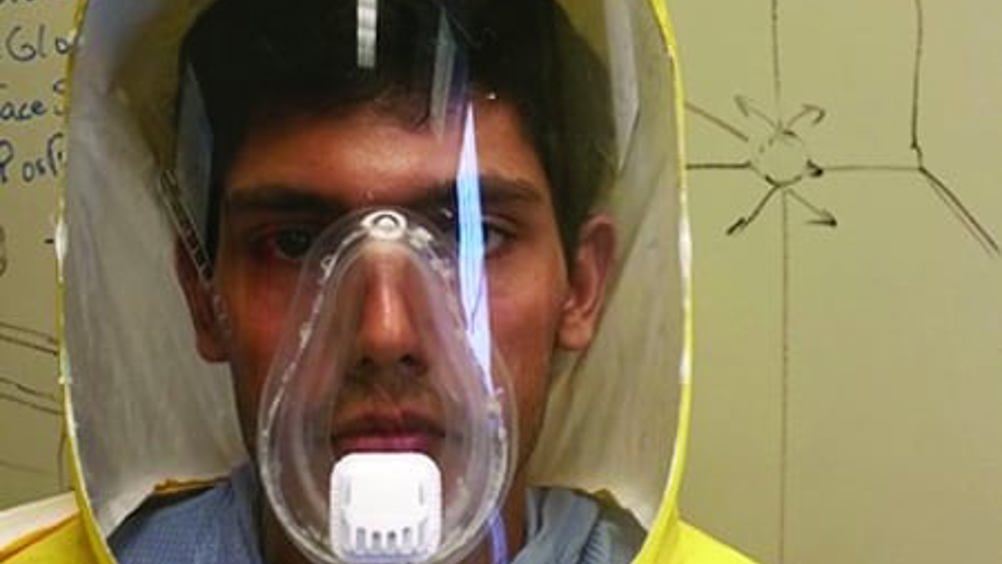Protective suit keeps aid workers cool in the fight against Ebola
An advanced protective suit developed at Johns Hopkins University is one of five awardees in a federal funding contest aimed at devising new tools to combat Ebola.

The Johns Hopkins University prototype is designed to do a better job than current garments in keeping health care workers from coming in contact with Ebola patients’ contagious body fluids, both during treatment and while removing a soiled suit. In addition, it is expected to keep the wearer cooler.
The first projects selected for the federal funding were announced on December 12 by the US Agency for International Development (USAID) through its new program, launched in October, called Fighting Ebola: A Grand Challenge for Development.
The improved protective suit is being developed by a team of engineers, medical experts, students and other volunteers under the supervision of Johns Hopkins University’s Center for Bioengineering Innovation and Design (CBID) and Jhpiego, a non-profit Johns Hopkins affiliate that focuses on international health programs.
‘If ever there was a public health crisis that merits the finest science, medicine and innovation the world has to offer, it is this one,’ Leslie Mancuso, Jhpiego president and CEO said in a statement. ‘The personal protection suit we are developing with our partners at the Center for Bioengineering Innovation and Design is purposefully designed to address safety and climate issues now putting health workers at risk.’
Register now to continue reading
Thanks for visiting The Engineer. You’ve now reached your monthly limit of news stories. Register for free to unlock unlimited access to all of our news coverage, as well as premium content including opinion, in-depth features and special reports.
Benefits of registering
-
In-depth insights and coverage of key emerging trends
-
Unrestricted access to special reports throughout the year
-
Daily technology news delivered straight to your inbox










Water Sector Talent Exodus Could Cripple The Sector
Well let´s do a little experiment. My last (10.4.25) half-yearly water/waste water bill from Severn Trent was £98.29. How much does not-for-profit Dŵr...